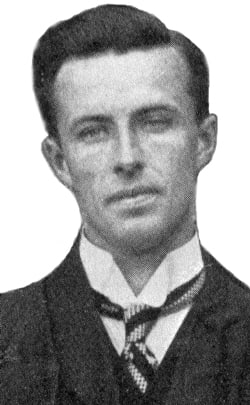
Lawrence Beesley
Highly observant Second Class passenger Lawrence Beesley helps to re-write the Titanic’s lifeboat departure story.
This is particularly so in relation to the lowering of the aft boats to port — numbers 16 and 14 — directly opposite the aft starboard side where Beesley was.
Beesley writes:
“I was now on the starboard side of the top boat deck; the time about 12.20. We watched the crew at work on the lifeboats, numbers 9, 11, 13, 15…
The men fell back and the women retired below to get into the boats from the next deck.
The crew were now in the boats… and down the boats went till level with B deck… they were lowered one by one… the four boats which formed a natural barrier being lowered from the [boat] deck and leaving it exposed.
A report went round among men on the top deck — the starboard side — that men were to be taken off on the port side.
How it originated, I am quite unable to say, but can only suppose that as the port boats were not lowered from the top deck quite so soon as the starboard boats (they could still be seen on deck), it might be assumed that women were being taken off on one side and men on the other.
But in whatever way the report started, it was acted on at once by almost all the men, who crowded across to the port side and watched the preparation for lowering the boats, leaving the starboard side almost deserted.
Soon after the men had left the starboard side, I saw a bandsman… his cello trailing behind him… This must have been about 12.40am…”
Beesley said his own boat, No. 13, departed at 12.45am. It’s in his book, but echoed by what he said to the New York Times of April 29, 1912: "No. 13 was not launched until over an hour after the collision." The collision was at 11.40pm, so 12.45 seems right for his departure.
The cellist was seen at 12.40 on the largely deserted aft starboard side, shortly after the men had left to follow the rumour. This puts the rumour — and the males’ migration — at about 12.35am.
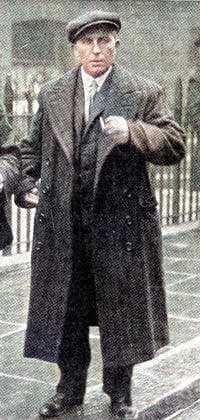
Now let us carefully follow what sailor Joseph Scarrott said in his evidence:
370. Which boat did you go to first? — You understand we started on the port side… and I then worked with the starboard boats.
At the time we were working at a starboard boat — I think I was at boat 13 — the Chief Officer [Henry Wilde] came along and asked me whether it was my right boat. I said, ‘No’… He said, ‘All right, go to your own boat,’ and then I went to No. 14 boat.
By Beesley’s timings, Scarrott would leave No. 13 (in which Beesley would be saved) at some time between 12.25 and 12.30, before the men crossed to the port side after him in a mass body on foot of a rumour that they were to be put into the boats there.
Scarrott said (Br. 471) “there was an interval when Mr Wilde sent me to my boat” — before the crowd arrived.
He also said (Br. 373) that an order had been passed for ‘Women and children first’ by Mr Wilde while they were both still to starboard.
It was perhaps this order that caused someone to next start the rumour that if women and children were to be taken off to starboard, then it must be that men would be saved in port side boats.
383. Having got to boat 14, which was your boat, what was done?
Scarrott — Directly I got to my boat I jumped in, saw the plug in, and saw my dropping ladder was ready to be worked at a moment's notice; and then Mr Wilde, the Chief Officer, came along [from starboard] and said, ‘All right; take the women and children,’ and we started taking the women and children. There would be 20 women got into the boat, I should say, when some men tried to rush the boats, foreigners they were, because they could not understand the order which I gave them, and I had to use a bit of persuasion. The only thing I could use was the boat’s tiller.
Chief Officer Wilde’s moving across to the port side likely also brought the crowd of men with him, as the aft starboard escape craft had already left the boat deck and were instead taking in women below.
Beesley says “the men… crowded across to the port side and watched the preparation for lowering the boats,” and this is Scarrott’s rush of men to No. 14 and other boats that were not for those men, contrary to the rumour.
386. Did you get these men out of your boat, or prevent them getting in?
— Yes, I prevented five getting in. One man jumped in twice and I had to throw him out the third time.
Scarrott next told how Officer Lowe came along, having been forward on the starboard side. “I told him that I had had a bit of trouble through the rushing business, and he said, ‘All right.’ He pulled out his revolver and he fired two shots between the ship and the boat’s side, and issued a warning to the remainder of the men that were about there. He told them that if there was any more rushing he would use it.” (Br. 393).
466. How long was it from the time she struck the iceberg until you got your boat into the water? - It was about one o'clock when we got our boat into the water.
468. — I judge that she struck about twenty minutes to twelve, and it was about one when we got out boats [our boat?] into the water.
Boat 13 was late in getting away because it was suspended by a twisted after-fall and was thus literally held up for a time. But when it did get free of the ship (1am): “We saw four other boats then. Sixteen was the nearest boat. She had just got clear a little previous to us.” (Br. 397).
Scarrott also said (Br, 578): “On the night of the accident I saw three boats lowered.” These were likely port side boats that reached the water before he did. (Steward George Crow, also in No. 14, agreed: “After getting into the water we pushed out to the other boats.” US p. 615)
On the port side Wilde gave the same order as he had to starboard: ‘Women and children first.’ Scarrott was asked (Br. 618): At the time you placed the women and children on board, were the decks at all crowded near your boat?
He replied: “There were people round about my boat, but I could not say what space there was beyond the cluster of people I saw there.” The cluster must have been Beesley’s men from starboard.
482. How long do you think it was after the ship struck the iceberg until you got the women and children into your [No. 14] boat?
Scarrott — Well, I should say, taking the time we got into the water, it would be half-past 12 we started getting the women into the boat — near about that time.
Half-past twelve — and then the men are rushing there. This completely agrees with Beesley. We have already seen above that the rumour, and mass departure of men from starboard to port, was at about 12.35am.
It was the chaos that impeded the lowering of No. 14 after it was filled… before a prolonged delay with the twisted falls left the boat trussed up at an awkward angle as other port side boats departed… which No. 14 could only join at 1am.
This dovetailing with Beesley’s timeframe also helps to show us, if we care to see it, that at least some port side boats, like many on the starboard side, were got away from the ship very early in the night — far earlier than the timings given in the British Report.
That document claims, for instance, that Scarrott’s boat was lowered at 1.30 — whereas he insists it was safely in the water at 1am, due to a long delay while the lowering was arrested by the twisted fall.

Officer Lowe said (Am. Inq., 116): “Nos. 12, 14 and 16 were down about the same time,” meaning in the water. He chased men out of No. 14, but took one ‘muscular chap’ for rowing — sportsman Charlie Williams. He was a second-class passenger — who had likely been one of the males on the starboard side with Beesley.
It is important to note that all the forward starboard boats had gone before Lowe made his way diagonally to the opposite end of the ship, the aft port side. He testified in America (US p. 405) that boat 1 was already in the water (and boats 7, 5 and 3 had gone before it) prior to his going to port.
Sailor Ernest Archer (saved in No. 16) agrees with this. He “assisted in lowering three boats” on the starboard side (US p. 645). “Then an officer came along — and he sang out that they wanted some seamen on the other side, on the port side, to assist over there. I went… and assisted in getting Nos. 12, 14 and [16] out.”
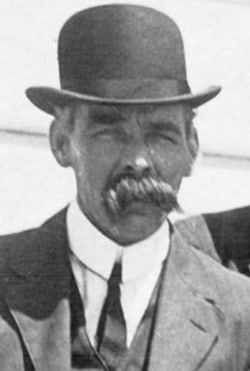
If Lowe reaches No. 14 at around 12.40am (by Beesley and Scarrott’s reckoning of passing time), then there are huge implications for the overall lifeboat lowering sequence.
As his No. 14 boat went down (US p. 417), Officer Lowe said: "I saw a lot of Italians Latin people all along the ship's rails… They were glaring more or less like wild beasts, ready to spring. That is why I yelled out to ‘look out,’ and let go, bang! right along the ship's side."
Lowe later apologised for his reference to Italians and Latins — the majority of these ‘wild beasts’ were likely Beesley’s fellow second-class passengers.
One of them, Nellie Walcroft, wrote in a letter to her hometown newspaper, the Maidenhead Advertiser:
“Boat 14… began to descend. There were 58 women and children, but only three to row… Fifth Officer Harold Lowe jumped on our boat and gave the orders.
Some men in the steerage were going to spring in and he threatened them with his revolver to shoot the first…. He shot twice, but only at the side…
The men lowered our boat. One side worked better than the other and the ropes on one side, did not act so the officer gave the order to cut the ropes and the boat fell some distance. Then we got away safely…”
But in a private letter, she wrote: “We had 70ft to be let down in the boat and when we were going down the steerage passengers jumped in the boat and our officer, seeing our danger, jumped on the boat and shot the men to keep them from swamping us.”
[She wasn’t the only one — fellow passengers Edward and Ethel Beane, at this location, separately said the same’ as did Laura Cribb, also aft on the port side, among many other alleged accounts of unruly scenes.]
Lowe, however, insisted (US p. 418): “I did not hurt anybody.” He was “absolutely positive I hit nobody” (US p. 419).
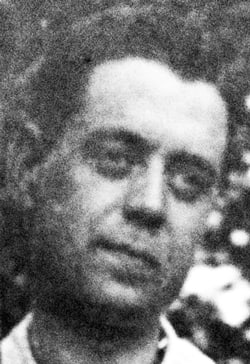
Steward George Crow was a crewman for No. 14.
He had also previously been working on boat No. 1 on the starboard side with Lowe and backed him up:
“There were various men passengers, probably Italians or some foreign nationality other than English or American, who attempted to rush the boats. The officers threatened to shoot any man who put his foot into the boat. He fired the revolver, but either downward or upward, not shooting at any of the passengers at all and not injuring anybody.”
(US p. 617)
What goes to sea stays at sea… More importantly, for the sake of this lifeboat sequencing and timing argument, Crow [who did not have an e at the end of his surname] again backs up Beesley and Scarrott as regards the timeframe:
Senator Bourne: And you left the ship how many minutes or hours after she struck?
Crow: It might have been an hour; it might have been more. (US p. 620)
The ship struck at 11.40pm, so this is 12.40am or later — and Crow is speaking to when No. 14 (with him in it) left the ship, i.e. was in the water [His answer to the previous question was “When we left the ship her head was down in the water”].
So this is not the time when the boat began to be loaded or lowered, but considerably later — given the problem with the tangled fall, which he too acknowledged.
But steward Frederick Morris gives another time —
5477. How long was it from when she struck till you lowered boat 14. Can you give us some idea?
Morris — Well, in my own estimation I should say it was about 1 or a quarter past 1.
He says that men did not try to get into No. 16, but they did in No. 14. He also agrees that No. 14, when it eventually got away, met No. 16 already out on the water (Br. 1189).
Steward C. E. Andrews was meanwhile saved in No. 16 and returns the time to the Beesley/Scarrott narrative —
Senator Bourne: You left the Titanic at what time - about what time - according to your recollection?
Andrews: I should think it was about half past 12, sir.
(US p. 625)
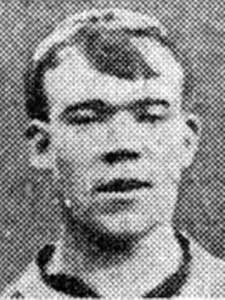
He also suggested the collision had happened “about 20 minutes past 11,” but admitted: “There was no clock about” (ibid).
Andrews further said that on his lifeboat’s “way out” from the ship’s side (ahead of No. 14) “we came in contact with another boat… filled up with ladies” (US p. 624), which, unfortunately, he was not asked to identify.
Andrews, like Morris and Archer, played down any disorder at No. 16. The evidence as to this lifeboat is very scant, but there are two peculiarities — (1) that Officer Moody did not leave in this boat, despite being told to do so by Lowe; (2) that the man who eventually did take charge of her came down a rope to do so when she was already in the water. He was the Master-at-Arms, the man charged with security on the Titanic.
And alongside the gun-bearing Master-at-Arms, we have various mentions of a plethora of officers in the aft port quadrant, including Moody, Lowe, Wilde, Lightoller, and even Murdoch. Why were they be needed there?
There is certainly no doubt about trouble at No. 14, as passenger Daisy Minahan recounted:
“After making three attempts to get into boats, we succeeded in getting into lifeboat No. 14. The crowd surging around the boats was getting unruly.
Officers were yelling and cursing at [the] men to stand back and let the women get into the boats.”
(US p. 1109)
This is corroboration of Scarrott’s difficulties.
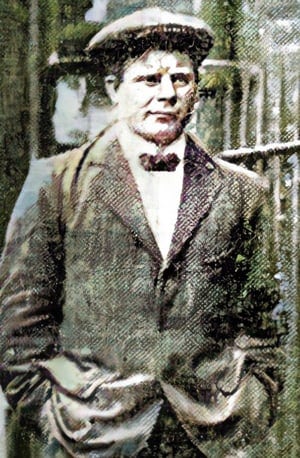
Seaman John Poingdestre testified to going towards his own boat [No. 12]. This was on the aft port side of the boat deck, and the time was 12.25am (Br. 2872). He next starkly stated:
2922. — There were hundreds gathered round waiting to get into the three boats.
2923. …Which boats do you mean? — Nos. 12, 14, and 16.
Poingdestre now went to help with No. 14, and testified that the crowd did not behave, and:
2966.— [Men from Second and Third class Br. 2971] “were trying to rush No. 12 and No. 14 boats.”
He added that he tried to keep them back “to the best of my ability” (Br. 2968), but the crew could not lower No. 12 “because of the passengers. Men were on the boat falls; the could not get them clear” (Br. 2969).
This candour itself raises questions as to why there should be no trouble at No. 16, the aftermost boat of all on the port side, and the nearest to the companion ladder from steerage.
Officer Lowe said he went to No. 14 in particular “because they seemed to be busy there” (Br. 15830), which is British understatement for trouble arising.
But he also said that, once some form of order was restored,
“numbers 12, 14 and 16 went down pretty much at the same time” (Br. 15835). This remains a very important remark.
He added (Br. 15853) that when leaving in No. 14 he encountered another lifeboat that had got away. “I took, I think it was, No. 12 to a distance of about 150 yards from the ship, and told him to stay there until I gave him orders… I then came back to the ship and escorted another boat, and so on, until I had five boats there.”
This corroborates his point about boats getting away practically together. And it thus further indicates that lifeboats got away early — and not at the carefully staggered intervals constructed by the British Inquiry to indicate just-in-time evacuations.
Steady, sequential departures is a far more preferable idea than masses of people being left behind for a very long time to contemplate their inescapable fate.
One can see how this abandonment would be an unpalatable situation for officialdom; hence there would be a temptation to put a decent, humane appearance on the order on proceedings.
Powerfully against this delicate feeling, however, is that the ship’s command was told that the vessel did not have the two hours and forty minutes it eventually lasted, but possibly only an hour.
Fourth Officer Joseph Boxhall:
15610. Did you hear the Captain say anything to anybody about the ship being doomed? — The Captain did remark something to me… I said, ‘Is it really serious?’ He said, ‘Mr Andrews tells me he gives her from an hour to an hour and a half.’
This is direct speech, reporting the words of E. J. Smith, who had to err on the side of the lower estimate given by ship’s designer, who is also the managing director of the builders, Harland & Wolff. In terms of flooding, he is far more knowledgeable than the Captain. Thomas Andrews is indeed the best qualified on the ship to pronounce on when she might go down. And he gives her possibly as little as sixty minutes.

Sailor Samuel Hemming stated in both America and Britain that a hearsay report of Andrews’ opinion was that there were only 30 minutes involved:
17739. [The bosun] told us to turn out, that the ship had half an hour to live, from Mr [builder Thomas] Andrews; but not to tell anyone, but to keep it to ourselves.
(17740. Repeats same)“The bosun came, and he says, ‘Turn out, you fellows,’ he says; ‘you haven't half an hour to live.’ He said: ‘That is from Mr Andrews.’ He said: ‘Keep it to yourselves, and let no one know.’”
(US p. 664)
Clearly the urgency for the Captain is to have lifeboats in the water as quickly as possible, whether well-filled or not, and preferably by 1am at the latest.
If we fail to grasp this imperative, allied to the strong temporal indications adduced from the witnesses above, then we are likely living in a false history — as unwitting dupes of an official Inquiry’s efforts at wish fulfilment.
Again: Captain Smith had to get lifeboats in the water as quickly as possible. But the Inquiry wanted to parsimoniously parcel them out. So who do we trust for the truth? Beesley et al, who were there, or Lord Mersey, who wasn’t? Let the reader think about it, and further consider the panel below, then decide.
Lightoller supports early launches on the aft port side.
Second Officer Lightoller was only ever launching lifeboats on the port side, a highly important distinction.

His earliest account, given to the US Inquiry, clearly suggests that aft port boats (towards the stern) were first to get away before he moved forward, to numbers 2, 4, 6, and 8.
Of these, 2 and 4 went late in the night, certainly long after No. 6. Yet in the extract of evidence below, Lightoller refers to boat No. 6 as being the fourth boat he launched on the port side.
The preceding three, therefore, can only have involved boats on the after end of the port side:
Lightoller: In the first boat I put about 20 or 25. Twenty, sir.
(US p. 76)Senator Smith: What happened to that lifeboat, the first one loaded?
Lightoller: It was loaded and sent away from the ship.
(US p. 77)Senator Smith: How many did the second boat contain?
Lightoller: About 30.
Senator Smith: Were those 30 lowered?
Lightoller: Yes; lowered and sent away.
(US p. 78)Senator Smith: How many passengers did the third boat contain?
Lightoller: I can only guess. I filled her up as full as I could, and lowered her…
(US p. 79)Senator Smith: Then the fourth boat. Was there any fourth boat on that side?
Lightoller: There were eight boats to a side
Senator Smith: As to the fourth boat, you followed the same course?
Lightoller: The same order; the same conditions.
Senator Smith: You put two men in each?
Lightoller: I think I was getting short of men, if I remember rightly. I started to putting one seaman and a steward in.
Senator Smith: One seaman and a steward?
Lightoller: Yes. That was the boat [No. 6] I had to put a man passenger in. I could only find one seaman. I had started to lower the boat… the boat was halfway down when the women called out that there was only one man in the boat. I had only two seamen and could not part with them, and was in rather a fix to know what to do, when a passenger called out and said, “If you like, I will go.”
Senator Smith: You don't know who he was?
Lightoller: I have found out who he was since.
Senator Smith: Who was he?
Lightoller: Major Peuchen
Senator Smith: Of Toronto?
Lightoller: Of Toronto. That is the name, yes.
(US p. 80)Senator Smith: That is the fourth one. How about the fifth?
Lightoller: As far as I know, the conditions were the same.
(US p. 81)
Lightoller thus clearly identifies No. 6 as the fourth boat he launched.
By stark contrast, the British Inquiry decided that No. 6 was the first boat to depart the port side.
All photos supplied by the author.
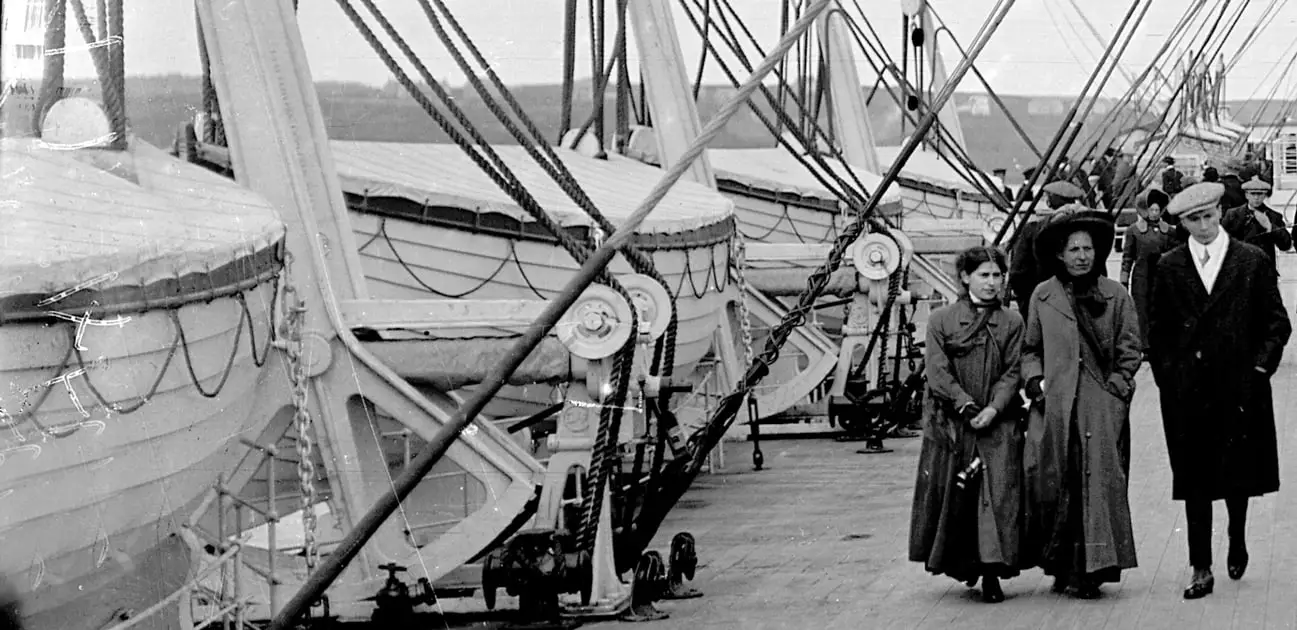

Comment and discuss